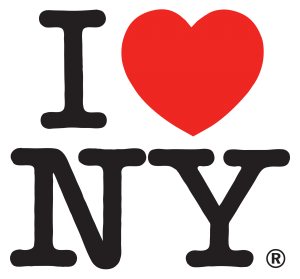Tag Archives: place branding
Place Marketing: Can cities be brands?
- Friday, 31 October 2025 11:28
- Written by Julian Stubbs
- 0 Comments
Place Branding & Names
- Thursday, 21 March 2019 11:19
- Written by Julian Stubbs
- 0 Comments
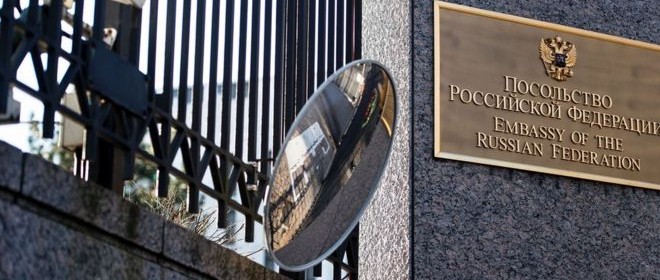
Well as the bard said ‘A rose by any other name might smell as sweet’, but names for places really do matter and can have an impact.
Good bit on the Beeb on the topic. Click the link:
BBC Importance of names
Meet the city stylists: A new breed of communicators shaping today’s place brands
- Tuesday, 15 May 2018 07:28
- Written by Julian Stubbs
- 0 Comments
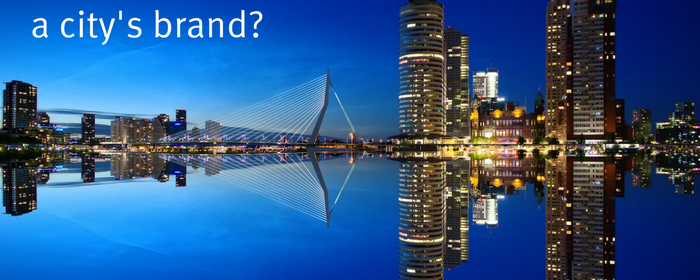
As cities grow in size and importance, the image of the city is coming under the control of savvy communicators who know what it takes to create a successful destination brand.
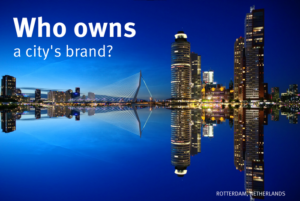 However, this is all still very much in the ‘self-promotion’ category, pressing the ‘send’ button and launching one’s desired vision into the ether. The narrative is much more convincing when an independent third-party shapes the perception and, in the past, this would have entailed press junkets, plying reporters with lavish food and accommodation and hoping that they would be favourable to the cause. Those days are long gone, however, partly due to the breakdown of conventional media giving rise to new breeds of independent journalists and writers.
However, this is all still very much in the ‘self-promotion’ category, pressing the ‘send’ button and launching one’s desired vision into the ether. The narrative is much more convincing when an independent third-party shapes the perception and, in the past, this would have entailed press junkets, plying reporters with lavish food and accommodation and hoping that they would be favourable to the cause. Those days are long gone, however, partly due to the breakdown of conventional media giving rise to new breeds of independent journalists and writers.

A new breed of ‘city stylists’ and ‘cool coordinators’ are shaping perceptions.
A few years ago, when global urbanisation passed the tipping point of 50%, a new era was heralded: for the first time in the history of the planet, more humans were living in urban areas than in the rural environment. Cities have always been key focal points for developing culture, trade and politics as wealth, prosperity and communications propel us ever-forwards through history.“Like a piece of architecture, the city is a construction in space, but one of vast scale, a thing perceived only in the course of long spans of time.” Kevin Lynch, The Image of The City, 1960.Cities are complex organisms that shape-shift across history, sometimes influencing, or being influenced by, the fate of the mother state. Cities are dynamic environments, constantly in a state of flux, renewal, growth, expansion, and with numerous stakeholders, all with a vested interest in how the city functions and also how it is perceived at local, and global levels. Today, perhaps more than ever, cities are competing with one another. In the age of the digital nomad, where borders are soft, and employment is location-independent, cities are competing to attract their future citizens and to retain top incumbents. Cities have become brands, many positioning themselves as post-industrial creative hubs intent on seducing the mobile and fickle creative classes. As economies depend more and more on intellectual property, these city brands have had to up their game to woo potential citizens. Architecture has always been one of the key tools in city branding and provided a boon for so-called ‘starchitects’ as each city ticks-off their ‘must-have’ lists of Hadids, Fosters, Pianos, Koolhaas’s and Liebeskinds.
“Architecture is central to this urban rebranding, the skin on a town or city’s face.” Tom Dyckhoff, The Age of Spectacle, 2017.By attracting human capital in the form of intellectuals and artists, thinkers and makers, cities can become hotbeds of innovation, generating creative capital that in turn stimulates further development and economic growth. Attraction, thus, is a key aspect in enticing new burgers to settle down and set-up shop. A strong city brand can go some of the way in attracting interest. However, it is the ‘content’, the way in which a city can fulfil its promise, that is the ultimate litmus test. Hype can grab attention, but if there is little to substantiate the claim, or a lack of underpinning, then attention will be cast elsewhere and one only has to look at the history of utopian communities, such as Robert Owens’ New Harmony, in Indiana, USA, for evidence of how high ideals and promises vs actuality aren’t always guaranteed to produce a successful outcome. So, this begs the question: who owns the image of the city?
“Not only is the city an object which is perceived (and perhaps enjoyed) by millions of people of widely diverse class and character, but it is the product of many builders who are constantly modifying the structure for reasons of their own. While it may be stable in general outlines for some time, it is ever changing in detail. Only partial control can be exercised over its growth and form. There is no final result, only a continuous succession of phases. No wonder, then, that the art of shaping cities for sensuous enjoyment is an act quite separate from architecture or music or literature. It may learn a great deal from these other arts, but it cannot imitate them.”(Lynch)Many municipalities will claim that they own the image of their city. However, in today’s online world, Googling images of a city will often deliver swathes of visitor-generated content that reflects how the city is perceived – not necessarily how the municipality wants to portray it. As with many brands – the true owners are often not the brand itself, but its consumers.
Cities are people, not concrete
In 2016, I attended a forum in Rotterdam, discussing precisely this topic. Google searches on the term ‘Rotterdam’ produced unending images of the city’s edgy architectural icons. However, the people, and the culture of the city were rarely portrayed. ‘Betonville’ – was my own personal name for this phenomenon and the city’s overt leveraging of edgy architecture – a term that was somewhat validated by a speaker from the municipality’s city marketing department, who stated: “it’s all very nice, but concrete has no soul, and we miss the balance of the human element in the portrayal of our city.” Consequently, a strategy was devised to populate the citybranding image bank – part of the marketing Toolkit – with manifold shots of people on the streets in an attempt to display the character and multi-ethnicity of the city, on a human scale.“Potentially, the city is in itself the powerful symbol of a complex society. If visually well set forth, it can also have strong expressive meaning.” (Lynch)
 However, this is all still very much in the ‘self-promotion’ category, pressing the ‘send’ button and launching one’s desired vision into the ether. The narrative is much more convincing when an independent third-party shapes the perception and, in the past, this would have entailed press junkets, plying reporters with lavish food and accommodation and hoping that they would be favourable to the cause. Those days are long gone, however, partly due to the breakdown of conventional media giving rise to new breeds of independent journalists and writers.
However, this is all still very much in the ‘self-promotion’ category, pressing the ‘send’ button and launching one’s desired vision into the ether. The narrative is much more convincing when an independent third-party shapes the perception and, in the past, this would have entailed press junkets, plying reporters with lavish food and accommodation and hoping that they would be favourable to the cause. Those days are long gone, however, partly due to the breakdown of conventional media giving rise to new breeds of independent journalists and writers.
Bringing in the press
Furthermore, to corral this new breed of reporters, bloggers, vloggers and foodies, still requires a well-considered strategy and coordinated vision if the city in question is to be represented optimally. Rotterdam has been one of the most successful cities in creating a buzz around its ongoing development in recent years. Always the poorer, less glamourous relative of long-term show-stopper Amsterdam, Rotterdam has had to fight damn hard to emerge from the shadow of its northern neighbour – now a mere 25 minutes away by regular high-speed train from the stunning, new, swoopy Rotterdam Centraal Station. The city’s previous claim to fame was based around Europoort – the sprawling harbour area east of the city stretching some 40km to the North Sea coast. It was this 24-hour hard-working mega-port that distilled the rolled-up-sleeves and no-nonsense, down-to-earth spirit that the Rotterdammers effortlessly embrace and embody. That, and the resolution to rebuild the city after it was devastated by bombing raids during WWII. The official city slogan ‘Make it Happen’ is firmly in tune with that characteristic. Now, as the modern city centre seeks space to expand, the former dockyards and industrial wharves are being turned into innovation docks, maker spaces and places of industrial-spectacle-verging-on-art as personified by artist and innovator Daan Roosegaarde’s Dream Factory in the city’s upcoming Innovation District M4H.Telling the story of a place
Despite the huge challenge in re-tuning the city’s somewhat drab industrial image into something altogether more melodious, it can have escaped nobody’s attention that Rotterdam is sweeping away the title of ‘must-visit destination’ across a plethora of media, varying from CNN and Huffington Post, to Vogue and The Guardian, throwing some serious shadow on Amsterdam, it’s old, historic competitor. It seems like every day the city is popping up in different media – a report in Spanish on the BBC World website or films on German TV around resilience and sustainability in the harbour city. This success is largely attributable to the efforts Rotterdam Partners – a focussed and dynamic organisation driven to put the city on the map. Moreover, within Rotterdam Partners, it is International Press Officer, Kim Heinen, who is being lauded for a strategy that makes other cities and destinations sit up and take notice. She has been referred to as the ‘city stylist’ by local blog ‘Vers Beton’ (fresh concrete): a title that is entirely appropriate.
Place branding? It’s not about the logo
- Wednesday, 28 February 2018 21:08
- Written by Julian Stubbs
- 0 Comments
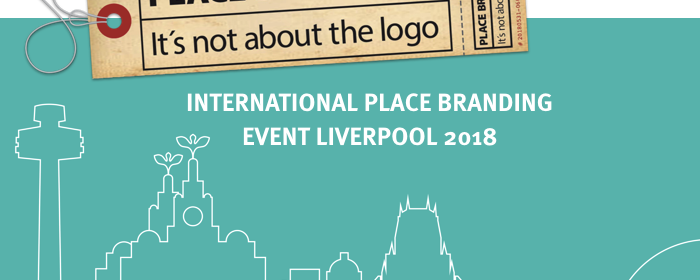
Then what is it all about? That’s the provocative question we’ll be debating with top place branding experts from around Europe at the International Place Branding Event Liverpool 2018 on May 31-June 1.
UP is organizing the event, together with Marketing Liverpool, which aims to stimulate discussion about place branding and destination marketing. Featuring speakers from well-known cities and municipalities across Europe, the event will tackle the question that has everyone guessing: what goes into the recipe for a successful place brand, beyond the logo? The event marks the 10-year anniversary of Liverpool’s year as European Capital of Culture, which has been a hugely transformative award for this vibrant city. Since 2008, Liverpool has seen a year-on-year increase in visitors and won external acclaim for its innovative place branding work.Place branding experts
Place branding experts from Amsterdam, London, Barcelona, Hamburg, Rotterdam, Stockholm and Liverpool itself are among more than 12 speakers who’ll present their ideas about how to go about creating a long term strategy for places and destinations in this global market. A series of Ted-style presentations (18 minutes long) will be followed by lively Q&A sessions with the panel to let the audience debate and question what makes a successful place brand. “It’s an industry which tends to provoke strong views and we don’t expect everyone to agree with each other, so we’re looking forward to hosting a punchy, fascinating couple of days,” said Chris Brown, director of Marketing Liverpool. CEO of UP, Julian Stubbs, said: “Can cities and places be marketed like regular brands? We’ll hear the views on that question and more from some of the leading European cities and practitioners.” Place branding is an industry which is changing at an exceptional pace, thanks to reasons as varied as growing connectivity, the prevalence of social media and even cities’ own success at marketing themselves. Over two days, attendees will hear from some of the leading voices in place branding and take part in sessions designed to challenge conventional wisdom and determine what the future holds and what destinations need to do.A historic venue sets the tone
The venue is the incredible Rum Warehouse, part of the skillfully renovated Titanic Hotel Liverpool, which is located in what was once the North Warehouse in the historic Stanley Dock area of the Port of Liverpool, a UNESCO World Heritage site. This 1846 building was damaged during a WWII air raid and has been skillfully renovated with careful attention to its historical character. Visiting Liverpool, you can jump into the past and present at the same time as you explore some of the city’s iconic locations such as the Tate Modern Gallery, Terracotta Warriors, The Cavern club or Penny Lane, while immersing yourself in the question of what makes a destination worthy of its brand image. The event marks the 10-year anniversary of Liverpool’s year as European Capital of Culture, which has been a hugely transformative award for the vibrant city. Since 2008, Liverpool has seen a year-on-year increase in visitors and won external acclaim for its innovative place branding work. Brown added, “Place branding has been extremely important here in Liverpool, and has helped us to build a real legacy off the back of a successful 2008. In an increasingly complex environment, destinations can’t rely on just having a nice logo or a catchy slogan; the destinations that understand this are often the ones which lead rankings for desirability amongst visitors and satisfaction of their residents.”What the presenters say
Some of the event speakers and sponsors shared a few thoughts about what place branding means to them. Olle Zetterberg, CEO of Stockholm Business Region: “The marketing and branding of places has never been more important and today cities, municipalities and countries need to be more visible and promote themselves to compete globally. We are also looking to highlight our city’s DNA to use it in our value-based marketing. The event in Liverpool will bring together a number of very interesting speakers on the subject of building successful places.” Mateu Hernández Maluquer, CEO of Barcelona Global: “Improving the reputation of Barcelona worldwide is a challenge shared by the Mayor’s Office and a coalition of civic and business leaders – including Barcelona Global. I’ll be explaining at this important event in Liverpool our vision for how that works.’’ Stephen Cowperthwaite, regional senior director at GVA, Liverpool: “Liverpool and GVA have been leading discussions with a number of cities around the importance and impact of waterfront regeneration for a number of years now, so the content of this event feels like a natural progression of this conversation. We are proud to be the corporate sponsor for this event and we look forward to getting more involved in these powerful discussions over the coming months.”Join the discussion
We’re expecting more than 200 attendees from European municipalities, destinations, cities and academic institutions. Will you be one of them? Read more about the speakers and programme.Register for the event here
The Place Branding Podcast: Liverpool
- Sunday, 21 January 2018 11:32
- Written by Julian Stubbs
- 0 Comments
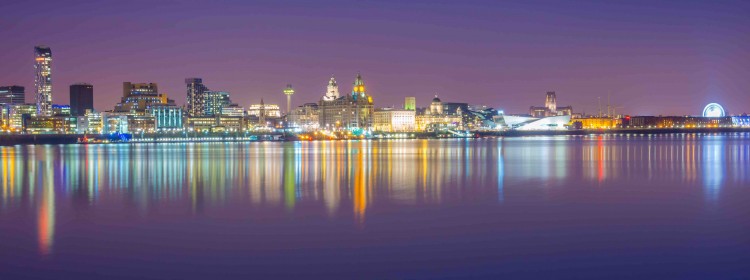
The Place Branding Podcast, Wish You Were Here. This edition: Liverpool. Interviews with Chris Brown, Marketing Director of Liverpool and John Lennon’s sister, Julia, in the famous Cavern Club. Watch out for an announcement about a Liverpool Place Branding event coming soon.
The Place Branding Podcast: Liverpool
